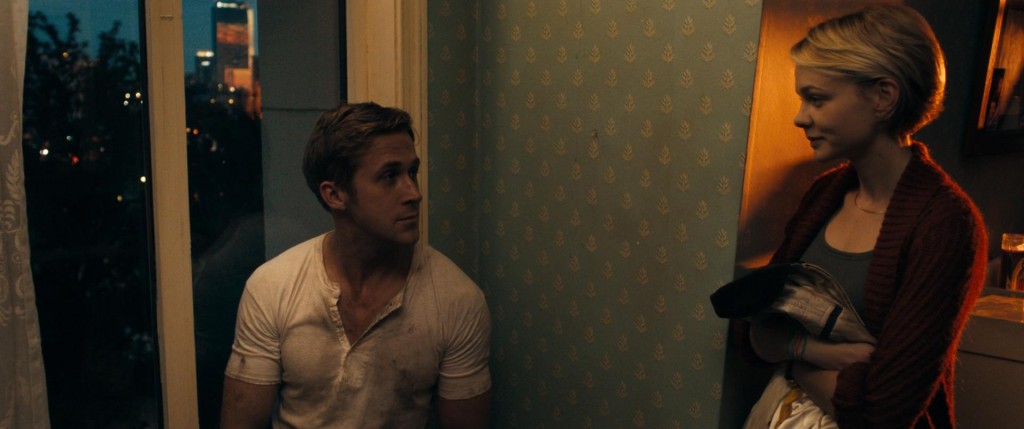“Can I talk to you? I won’t keep you long. I have to go somewhere and I don’t think I can come back. But I just wanted you to know. Getting to be around you and Benicio was the best thing that ever happened to me.” – Driver, Drive (2011)
Filmmakers manipulate and encode elements of cinema. It’s a fact. Some do it well, for example, Drive (2011) by Nicolas Winding Refn; or very poorly, I nod, The Room (2003) by Tommy Wiseau. (The Room is so horrible, it’s become a fantastic cult hit. And yes, I recommend you watch it purely because of how bad it is, or at least this scene. I can’t stop laughing right now and people are looking at me, but oh man, it’s so bad, you have to watch it.)
Reflecting on encoding, we took a brief moment to experience The Player (1992), a short yet bizarre film that fragmented film elements and presented them like chunks; breaking with shapes, movement, spaces and patterns. By manipulating space and time, the director of the film not only controls the frame, but also creates a perception that’s living and constantly shifting.
Taking this extension, point of view is a tool that is constantly exercised and crossed by Refn in Drive (2011). On a tight budget with a clear artistic vision, Refn allowed the camera to become an extension of the eye and used film reality (or fantasy) to create a stylised, succinct and unforgettable film. Going through the motions of his world, the main protagonist leads the audience around his life, silently observing his work and those involved. Unnamed throughout the entirety of the narrative, Driver simply does his job and does it well.
Framed through traditional visual rules like The Quadrant System, the visual perspectives of the frame and scenes constantly unfold and tell unique stories through the neo-noir world of Drive (2011). Viewing first half of the film in class, we were invited to take not of any patterns or point of views we thought were of importance. These notes were as follows:
- Point of View: Perspective in Drive (2011) are constantly shifting. From the sights of Driver, to the characters around him, the director and the camera itself; Drive (2011) challenges the viewer to take a ride, smoothly guided by continuity editing.
- Driver and Irene: Often associated with cool colours like blue, Driver is often seen as collected and stable in the eyes of Irene and her son Benicio. Flickering between dark night rides and the everyday risk of his job, Driver slowly becomes infatuated with Irene, associating her between warm colours like yellow, gold and a softer blue. As the two become closer, the colours of Driver (blue) and Irene (yellow) concurrently flow and change, interconnecting with one another between their apartments, conversations and later, their kiss in the elevator.
- Mob, Criminals, Danger: From the first frames of the film, danger and tension was bathed in orange from Driver’s night call, associating the colour with uneasiness. Glimmering like an amber stop light throughout Drive (2011), orange comes as a reminder for obstacles and issues up ahead. Examples include: when Driver is in Irene’s house for the first time and the photograph of imprisoned husband is framed by vibrant orange; the mob’s restaurant and hangout is tiled with orange; the woman who helps set Driver up has a thick lob of orange hair; the interrogation scene; and of course, echoed throughout Driver’s sequences as he drives.
I found a useful video to continue on the discussion and illustrate my own thoughts on Drive (2011). If anything, this film thinks for itself through the eyes of the camera and is so effortlessly smooth it makes me weep. (Hello, Refn, don’t even get me started on the soundtrack!)

